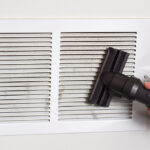In the realm of healthcare, the purity of the air within medical clinics is not just a matter of comfort but a critical aspect of patient care and infection control. Regular duct cleaning in these settings is paramount, particularly considering the high volume of sick individuals and the potential for airborne pathogens to circulate. Here’s an in-depth look at why medical clinics should prioritize this aspect of their facility maintenance, especially with an annual cleaning schedule.
The Critical Role of Duct Cleaning in Medical Clinics
- Infection Control: Medical clinics are hubs of activity where viruses, bacteria, and other pathogens can easily spread. Properly cleaned air ducts help minimize the presence of these harmful microorganisms, ensuring they’re not circulated through HVAC systems.
- Air Quality Maintenance: Clean ducts contribute to better indoor air quality, crucial for patients with compromised immune systems or respiratory conditions. Removing contaminants from ducts ensures that the air patients and staff breathe is as clean and pure as possible.
- Compliance with Health Standards: Regular duct cleaning helps healthcare facilities meet stringent health and safety standards, avoiding potential violations that can arise from neglecting HVAC system cleanliness.
- Enhancing Patient Trust and Clinic Reputation: Patients expect sterile and clean environments when they visit medical facilities. Visible commitment to regular maintenance and cleanliness, including ductwork, reinforces trust in the clinic’s hygiene standards.
- Preventing Costly Breakdowns: Regular cleaning of ducts and HVAC components can prevent unexpected breakdowns, ensuring that clinic operations aren’t disrupted due to equipment failure. This preventative measure is cost-effective in the long run, avoiding expensive emergency repairs.
- Energy Efficiency: Clean ducts and well-maintained HVAC systems operate more efficiently, reducing energy costs. For medical clinics, where systems often run continuously, this can lead to significant savings.
Implementing a Duct Cleaning Protocol
Implementing a duct cleaning protocol involves more than just scheduling; it requires ensuring that the service is performed comprehensively and safely. Clinics should:
- Hire Certified Professionals: Engage services that specialize in medical facility cleaning and are certified by reputable organizations like NADCA or IAQCert. Their expertise ensures that cleaning is done thoroughly and in compliance with healthcare cleaning standards.
- Use Advanced Cleaning Techniques: Professionals equipped with the latest tools and methods, like high-efficiency particulate air (HEPA) filter-equipped vacuums, can remove even the finest contaminants from ductwork.
- Schedule Regular Inspections and Cleanings: Annual cleanings are a baseline, but depending on the clinic’s location, patient volume, and specific health services provided, more frequent cleaning may be necessary.
- Educate Staff: Ensure that clinic staff understand the importance of duct cleaning and can communicate this to patients, reinforcing the clinic’s commitment to providing a safe and clean environment.
For medical facilities, the decision to maintain meticulously clean air ducts is not just an operational consideration but a fundamental aspect of patient care. The Indoor Maintenance Guide on DuctCleaning.org offers additional insights into maintaining optimal indoor air quality, an essential read for any healthcare facility manager aiming to uphold the highest standards of clinic hygiene and patient safety.














